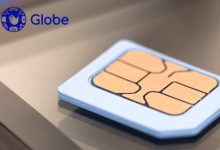NGAYON na ang panahon para gawing digital mula cash ang pamamaraan ng pagbabayad. Ang malawakang paggamit ng cash ang magiging pangunahing balakid sa kampanya ng bansa para sa digitalization.
Ito ang ipinaliwanag ni Globe President and CEO Ernest Cu sa isang panayam kamakailan hinggil sa ‘new normal’.
Ayon kay Cu, magiging mahirap ang mag-iskala kung ang mga negosyo, lalo na yaong may kinalaman e-commerce, ay mananatiling umaasa sa cash bilang bayad para sa goods at services.
Bagama’t patuloy na tumataas ang online transactions, karamihan sa mga Pinoy at maraming negosyo na nag-o-online ay pinipili pa rin ang cash-on-delivery na bantad sa mga panganib tulad ng pagkawala ng pera dahil sa aksidente, hindi pag-iingat o pagnanakaw; hindi matagpuang tirahan; pagtanggi ng customer na tanggapin ang produkto; at ang higit na nakababahala ay ang pagkalat ng COVID-19.
“Cash is a pain because of security issues and it is expensive to handle. There are also so many impediments in delivering goods in this country because the addressing system is very poor and so it’s hard to find places. People also have this notion that COD is not actually a purchase but an option to buy. So If they don’t like the product then they would not answer the door or phone call that comes from the courier. How will the seller earn from this? How will they scale?” Most especially under the current environment, less cash handling is better,” wika ni Cu.
Idinagdag pa ni Cu na balakid din ang cash sa pagsulong ng telemedicine at iba pang kaugnay na serbisyo sa Filipinas.
“Telemedicine providers, such as KonsultaMD, offer 24/7 access to licensed doctors for a fraction of regular face-to-face consultation. However, it is impractical for patients to pay in cash since medical advice is given either through the phone or through video calls.”
Tinukoy rin ni Cu ang tollways kung saan nakapila ang mga sasakyan sa cash lane na nagiging sanhi ng pagsisikip ng trapiko sa halip na dumaan sa mas mabilis at mas kumbinyenteng Radio Frequency Identification (RFID) compatible lane na nagkakaloob sa mga motorista ng komportableng biyahe.
Bagama’t marami ang gumagamit ng cash, sinabi ni Cu na naghahanda na ang mga Filipino sa ideya ng electronic money.
“GCash, for instance, received further boost in usage during the pandemic where physical distancing and the community quarantine necessitated the use of digital means to pay and transfer money not only among individuals but also among organizations.”
“GCash already had good momentum going into the pandemic and had even more momentum in the middle of it. The awareness level has increased. The trial has increased. The number of transactions has increased. Everything has just increased in terms of numbers. And the good thing is that people who even said that they don’t need the service are actually requesting us to increase their wallet limits within a matter of days or weeks of using the product. That’s how convenient it is,” aniya.
Dahil sa pangangailangan ng mga tao para sa contactless platforms, ang GCash App ay nagtala ng 200% pagtaas sa bilang ng installations mula March 15 hanggang April 15, at 250% growth sa bilang ng app registrations sa kahalintulad na panahon upang makabilang ito sa ‘top five most downloaded apps’ sa Android. Marami ring private, non-government, at government organizations ang gumagamit ng GCash para mangalap ng donasyon at ipamahagi ang pondo.
Ang digital payments gaya ng GCash ay maaaring gamitin hindi lamang para sa consumer spending at business procurement, kundi para makatulong din sa pagpapabuti sa payment ecosystem sa iba’t ibang grupo tulad ng pagbabayad ng mga mamamayan sa gobyerno at vice versa, para sa dagdag na seguridad, efficiency, at convenience.







Comments are closed.